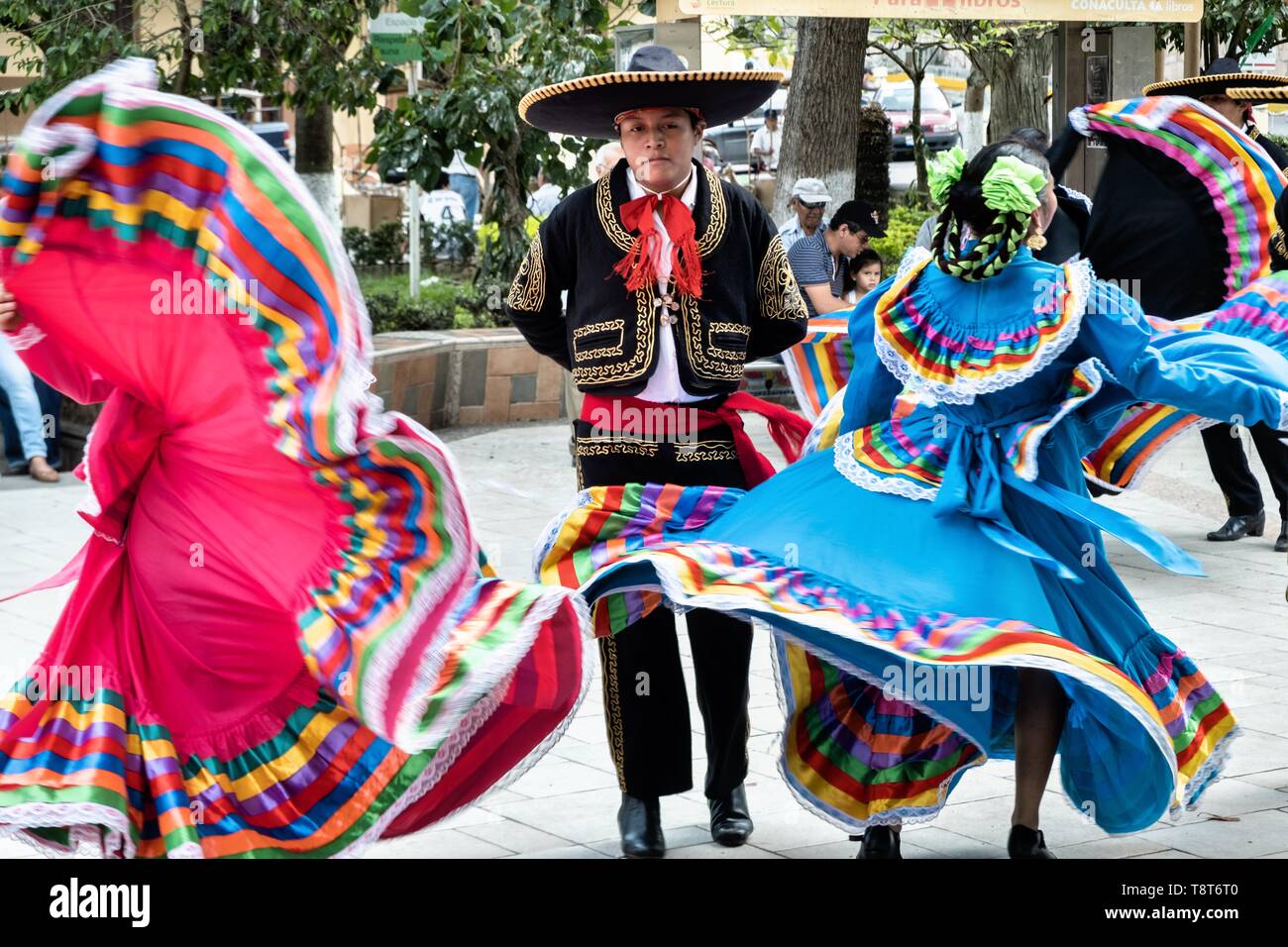Introduction Mexican folk dancing is a vibrant expression of the country’s rich cultural heritage, weaving together history, ritual, and storytelling through movement. Two of the most iconic dances—Jarabe Tapatío, known as the “Mexican Hat Dance,” and Danza de los Voladores, the “Dance of the Flyers”—represent both the beauty and spirituality that define Mexican traditions. In this article, we will explore the significance of these folk dances, their origins, their evolution through time, and how they continue to play an essential role in the cultural identity of Mexico.
1. Introduction Mexican folk dancing is more than just an art form—it’s a living connection to the country’s deep history and diverse cultures. Rooted in ancient indigenous traditions and shaped by centuries of Spanish influence, these dances are celebrated during festivals, ceremonies, and national holidays. In this article, we will delve into the rich traditions of Jarabe Tapatío and Danza de los Voladores, uncovering their historical context, cultural importance, and the ways in which they continue to inspire Mexicans and audiences worldwide.
2. Section 1: Jarabe Tapatío and Its Cultural Significance
2.1: The Origins of Jarabe Tapatío The Jarabe Tapatío, commonly known as the Mexican Hat Dance, originated in the 18th century in the state of Jalisco. This lively and colorful dance was initially a courtship dance between a man and a woman, symbolizing love and flirtation. The dance features intricate footwork and fluid movements, often accompanied by traditional mariachi music. Over time, the Jarabe Tapatío became a symbol of Mexican national identity and pride, representing the country’s cultural blend of indigenous, African, and Spanish influences.
The name “Jarabe” refers to a type of traditional Mexican music, while “Tapatío” refers to the people of Guadalajara, the capital of Jalisco. As the dance evolved, it absorbed various regional influences and became a symbol of unity and Mexican nationalism, particularly in the 19th century when the country faced political upheaval.
2.2: The Evolution of Jarabe Tapatío in Modern Times As Mexico’s national dance, Jarabe Tapatío has been adapted and performed worldwide. In modern times, its movements and music continue to evolve, with contemporary choreography reflecting Mexico’s changing social and political landscape. Today, the dance is a staple at cultural festivals, public events, and even in educational settings, where it is taught as part of Mexico’s cultural preservation efforts.
The continued popularity of the Jarabe Tapatío speaks to its enduring appeal and its role in uniting Mexicans around a shared heritage. Whether performed at family gatherings or national celebrations, it serves as a reminder of the deep cultural roots that connect the Mexican people, from their indigenous ancestors to their contemporary society.
3. Section 2: Danza de los Voladores: A Sacred Tradition
3.1: The Rituals and Symbolism of Danza de los Voladores Danza de los Voladores, or the Dance of the Flyers, is an ancient ritual that has its roots in indigenous Mesoamerican cultures, particularly the Totonac people of Veracruz. In this breathtaking ceremony, a group of dancers ascends a tall pole and, with rhythmic movements and prayers, leaps from the top, tethered only by ropes. As they spin downward, they symbolize the unity between the earth and the sky, and the connection between humans and the gods.
The ritual is imbued with spiritual significance, representing the cycle of life, death, and rebirth. The act of flying symbolizes the souls of the dancers ascending to the heavens, while the rhythmic movements of the performers echo the sacred elements of nature. The dance is often accompanied by music played on traditional instruments such as drums and flutes, further enhancing the spiritual and symbolic experience.
Danza de los Voladores is performed during festivals and ceremonies to honor various gods, including Tlaloc, the Aztec god of rain, and Xipe Totec, the god of fertility and agricultural abundance. The dance is not only a physical performance but also a deeply spiritual practice, reflecting the connection between the natural world and divine forces.
3.2: Preserving Danza de los Voladores Today Danza de los Voladores is not only a stunning visual performance but also an important cultural tradition. Despite its challenges, such as the commercialization of traditional festivals and the risks associated with performing high-altitude stunts, efforts to preserve the dance are ongoing. UNESCO recognized Danza de los Voladores as part of the Intangible Cultural Heritage of Humanity, ensuring its continued existence.
Modern performers are dedicated to passing the dance on to younger generations, incorporating both traditional and contemporary elements to keep it alive and meaningful. Cultural organizations, local communities, and indigenous groups continue to play a crucial role in preserving the authenticity of the ritual, ensuring that the Danza de los Voladores remains an integral part of Mexican culture for future generations.
4. Conclusion Mexican folk dancing, as exemplified by Jarabe Tapatío and Danza de los Voladores, is a testament to the resilience and vibrancy of Mexican culture. These dances are not just performances; they are living traditions that carry with them centuries of history, symbolism, and connection to the land. By celebrating and preserving these ancient art forms, Mexicans continue to honor their ancestors and share their rich cultural heritage with the world.
As we continue to appreciate and engage with these dances, we recognize the power of folk art to transcend time, bridging the gap between generations and cultures. We encourage you to explore these traditions further, whether through attending a performance, participating in a local festival, or delving into the deep roots of Mexican folk dance.
Meta Description: Explore the beauty and significance of Mexican folk dancing, from the Jarabe Tapatío to Danza de los Voladores, and their enduring cultural impact on Mexico today.
This article draft should provide a comprehensive exploration of these two iconic Mexican folk dances. Let me know if you’d like any further modifications!
